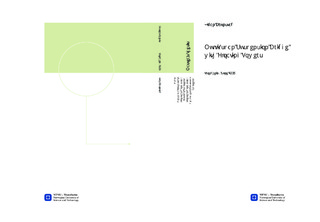| dc.description.abstract | The Norwegian Public Roads Administration (NPRA) is currently conducting a feasible study of crossing 8 fjords on the west coast of Norway. The most challenging crossing is the 3700 m wide Sognefjord. Three main concepts are under development, and one of the concepts of this crossing is a three span suspension bridge on floating towers. The floating foundation suggested is a multi-column pontoon with mooring lines to seabed. The object of this thesis was to study this bridge concept with respect to static deflection and dynamic properties. A preliminary bridge design based on the Hardanger Bridge design and a preliminary design of the pontoons was conducted. The hydrodynamic effects, e.g. added mass and added non-linear damping, were calculated according to potential theory and Morison equation assuming a vertical circular cylinder. The bridge and pontoons were modeled in the finite element program Abaqus/CAE. The static mean wind analysis and static traffic analysis gave reasonable results, but the tolerability of deflections zmax = 8.8 m for static mean wind and ymax =9.8 m for traffic load can be disputed. From real and complex eigen-value analysis natural frequencies, mode shapes and damping ratios were conducted. The ten first eigen modes had considerable motion in the pontoons with natural period between 138 s and 20 s. The first stiffening girder modes in vertical, horizontal and torsional direction have natural periods were 16.5 s, 15.1 s and 2.6 s. The effect of adding hydrodynamic damping resulted in increased damping ratio of 6 % for modes with lateral and longitudinal motion in the pontoons, 2.5 % increased damping ratio for modes with vertical motion in the pontoons and 1 % increased damping ratio for modes with longitudinal rotation in the pontoons. The validity and accuracy of these increased damping ratios is disputable. Simple time-domain response simulations gave considerably larger damping ratio using the logarithmic decrements of the oscillations. Three of the four simulations gave maximum damping forces according to implemented non-linear damping behavior when assuming reasonable maximum velocities. | |

